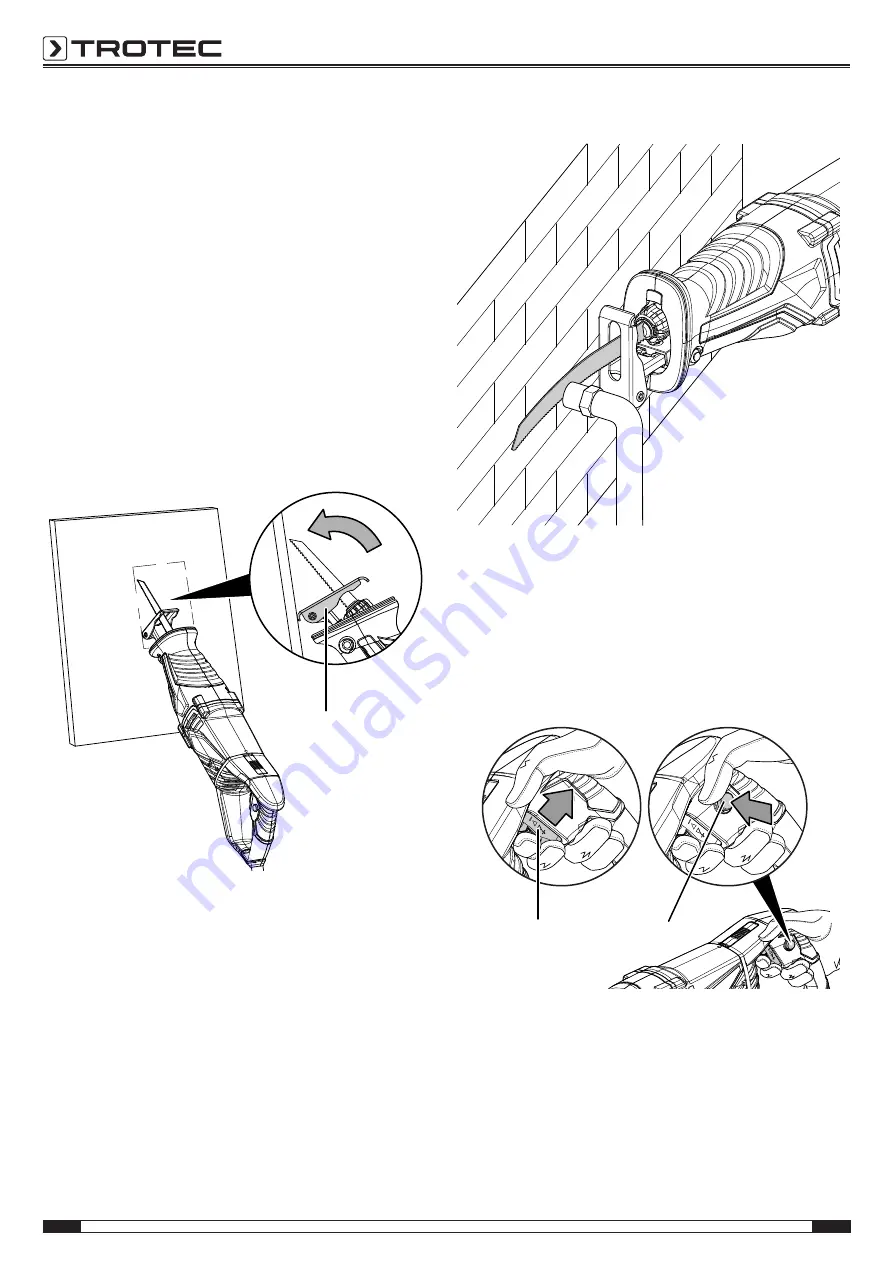
11
EN
Operating manual – sabre saw PRCS 10-850
Plunge-cutting:
•
Only soft materials such as plasterboard or the like may be
processed using the plunge-cutting method. Do not
process any metals using the plunge-cutting method.
•
Use short saw blades for plunge-cutting.
•
First place the edge of the guide shoe (10) on the
workpiece before switching the power tool on, see
Schematic representation
plunge-cutting
. Note that the
saw blade must
not
be in contact with the workpiece.
•
Select the maximum stroke rate and allow the saw blade
to slowly plunge into the workpiece. To do so, bring the
saw blade closer to the workpiece while maintaining
contact between the edge of the guide shoe (10) and the
workpiece.
•
As soon as the guide shoe (10) rests on the workpiece, you
can continue working along the cutting line.
Schematic representation plunge-cutting:
10
Flush cutting:
•
Using elastic bi-metal saw blades you can saw off
protruding objects such as water pipes or the like directly
at the wall.
•
Make sure that the saw blade extends beyond the
diameter or thickness of the object, otherwise there is a
risk of kickbacks.
•
Apply lateral pressure on the power tool until the bi-metal
saw blade and the side of the guide shoe are positioned
against the wall, see Schematic representation
flush
cutting
.
•
Saw through the object applying constant lateral pressure.
Schematic representation flush cutting:
Switching continuous operation on and off
When continuous operation is activated, the on/off switch does
not have to be held permanently, which makes working more
comfortable.
1. Proceed as described in the chapter Switching the device
on and off, steps 1 to 6.
2. Press the locking switch (3) with your thumb until it locks
in place completely.
4
3
I.
II.


































